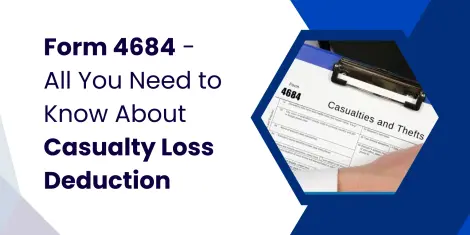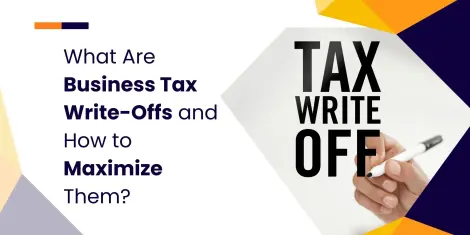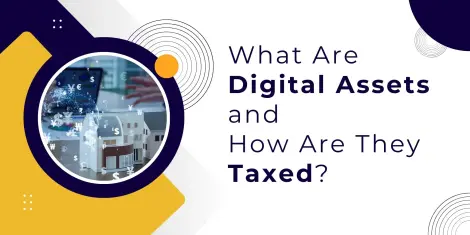Table of Contents
With a more significant working force, adapting to technology, and longer working hours in major corporations, a considerable majority of employees have witnessed that childcare responsibilities affect their productivity and call of duty at home. A lot of businesses all over the globe have addressed the issue and have also provided measures. To retain employees and build loyalty, trust, and productivity, childcare benefits are provided to improve the workplace atmosphere. Do you know that the federal government provides federal incentives and privileges through employer childcare credits? You can claim the employer child care credit to reduce your tax bill significantly. This credit is provided to help employees with affordable childcare benefits.
One can check out Form 8882 for claiming tax credit on the cost of childcare benefits provided to employees. Keep reading to know more.
The employer-provided child care credit, Form 8882, can be seen in the Internal Revenue Code. In simpler terms, a tax credit is provided for qualifying childcare benefits or resource payments, which in turn is part of a general business tax. One can claim this tax credit within three years of the tax return's due date. You must either fill in an amendment to receive credit on the actual return rate. Form 8882 describes employer perquisites and how they can use the tax credit to lower their tax bill. One can enjoy the benefit of up to 25% of childcare costs (qualifying). Apart from this, they can also claim 10% of referral costs and childcare resources to support childcare while working in a corporation. This ensures employee productivity during office hours and longer retainment—form 8882 deals with claiming credit for qualified childcare benefits and resources. The employer child care credit is a part of the general business tax credit.
All corporations or businesses must file taxes online and complete Form 8882, except S corporations, estates, trusts, and partnerships. These entities may need to check out Form 3800 to claim the tax credit. Another thing to note about the employer child care credit is that the maximum allowed credit here is $150,000 per year. At the same time, a total expenditure of $430,000 is vital to receive the full credit. Eighteen other states provide tax credits for employer-provided childcare, apart from the federal tax credit.
Employers' Eligible Expenses Under The Employer- Provided Childcare Credit
The employer-provided childcare credit provides employers with up to $150,000 annually to offset their qualified childcare cost by 25% or 10% significantly. How you offer employer-provided childcare determines the amount of tax credit you owe. Individuals working in businesses can claim up to 25% of the expense if you offer onsite childcare or a contract with a qualified childcare facility. Conditions for the employer-provided childcare credit include -
1. Childcare expenditures done by you will allow formulating, rehabilitating, extending, or building of any property used as a qualified childcare facility.
2. The expenditure is used to provide employee training and scholarship programs for children or to give higher salaries to professionals in the childcare field.
3. You can guarantee 10% of costs, assuming your contract with an asset and reference service that assists employees with tracking down childcare.
Another thing to note about the employer-provided childcare tax credit, Form 8882, is that it is a dollar-for-dollar tax credit. In simpler terms, you will receive a dollar credit for every dollar you spend up to 25% of the said expense. These tax credits can be filed on Form 8882 by IRS and are proven to offset total tax liability. There lies a vast difference between a tax credit and a tax deduction; a deduction works on the final taxable income, while a credit on total tax liability. In the case of employer-provided child care tax credit, the expenses can work by combining the credit and business expense deduction to save more money.
What Are Qualified Childcare Expenditures?
Large corporations or businesses that justify onsite daycare can deduct the following -
1. Expenses from expanding property for daycare use
2. For rehabilitating, growing, or formulating property for daycare use
3. For supporting childcare workers via training, payments, or scholarships.
The childcare credit provides employees the power to claim credit for contracting with licensed childcare programs or activities, such as home-based programs providing services to employees. In order to provide benefits to other employees and better taxation benefits, a lot of businesses collaborate with childcare companies to offset tax liability for employees.
These businesses must adhere to local and state authorities' specific rules and regulations. This includes qualifying as a childcare facility, licensing requirements, and more. Some factors that need to be fulfilled by these corporations include the following -
1. The aim of the childcare facility should be to provide childcare benefits.
2. Employees can claim the credit only in a tax year.
3. Utilization of the office should not separate for exceptionally remunerated workers
Restrictions While Claiming The Credit
One must offset any qualifying childcare benefit cost by the credit amount you accredit to facility-related expenditure. Along with this, other deductions and credits with the same expenses should also be reduced. Double benefits are not allowed to be claimed in this case. Always consult a business tax credit professional and ensure all your expenses meet the instructions and there are no duplicate claims. These experts will help you to figure out your credit and get you qualified to receive the maximum.
What Are The Special Provisions Related To Credit?
1. Under the Form 8882, one must make sure that it does not provide the advantage of double benefits. One must lower the basis of qualified childcare facilities by the credit amount allocable to capital expenses related to the facility. Along with this, the allowable deductions used in calculating the credit amount allocable to expenditures must be reduced.
2. In a condition where, before the 10th tax year after the year in which your childcare facility is placed in service, and the facility faces a change in ownership or ceases to operate as a qualified one, you may need to recapture your credit parts. The recapture tax is reported on the line of the tax returns with other reported taxes. This tax might then not be used in calculating the amount of credit or in finding the alternative minimum tax.
3. Another thing to note about form 8882 is that to figure the credit amount, the members of the group or corporations (under section 52 a) and members of the group or business under a common control (under section 52-b), are considered as a single taxpayer.
How To Claim The Credit?
Employers need to fill out Form 8882 and attach it to Form 3800 to claim the credit. Both of these forms must be attached to your business tax return. While filling the Form 8882, always ensure that you claim the credit within three years from the due date of return; you are filling the form from the right source. If your credit source is from pass-through entities, you must report the credit directly to Form 3800 rather than filling out Form 8882.
Another thing to keep in mind is that you might need to recapture part of the credit. This will occur ten years after the opening of your childcare facility if it shuts or the privilege changes. This can be avoided when any new owner agrees to cover your liability.
How Can Nskt Global Help?
At NSKT Global we aim to provide our customers with quality-driven, valuable sources of information and services. Our dedicated team of experts deals with services like Business advisory, IT consultations, and company formation services for you to kickstart your business and understand Form 8882 better and other IRS taxation services.







